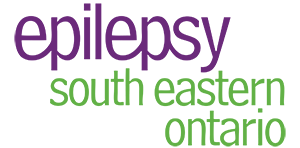In the majority of cases (approximately 60%), seizures are controlled with seizure medication.
None of the existing medications can cure epilepsy, but carefully-prescribed and well-followed regimens of medication have become increasingly successful in preventing seizures.
Whenever possible, physicians employ monotherapy, the use of a single medication, to control seizures. Some people, however, must take two or more medications to control their seizures, called polytherapy.
Although the obligation to follow a strict course of seizure medication therapy can be frustrating, the right medication can greatly improve a person’s ability to lead a full, active life.
Determining the correct dosage and best medication for any one person’s needs can be a very difficult part of medication therapy. It may take a long time to arrive at the best initial routine, and medication requirements may change over the years.
Finding the Right Seizure Medication
Reaction to given medications varies from one person to the next. Of two people taking the same medication, one may experience side effects while the other will not. By the same token, some seizure medications will reach a therapeutic, seizure-preventing, level in a patient’s bloodstream more quickly than other medications.
For these reasons, it may take some time to customize the dosage and/or choice of medication(s). Doctors try to achieve a balance by prescribing the medication that offers the greatest degree of seizure control with the fewest side effects.
Generic or Brand Name Medications
Brand name medications are those developed by research-oriented pharmaceutical companies. These medications appear first on the market and their names become widely known to describe the medication.
The pharmaceutical company that develops a new medication obtains an exclusive patent to manufacture and distribute that medication for a certain number of years. When the patent expires, other companies are then able to offer generic versions of the brand name medication, at lower prices.
Generic medications contain the same active ingredient as brand name products, but may be different in colour, or in their other non-active substances, known as excipients. These substances are the fillers, binders and dyes that give a tablet or capsule its shape, or that help mask a medication’s unpleasant taste.
A change in excipients can change the availability of active medication to the body for certain medications used in the treatment of epilepsy. Therefore, it is important to check with your physician or pharmacist before changing brands of seizure medication.
Whether you use a brand name or generic medication, it is important to be familiar with its colour, shape, size and identifying marks. Caution is needed because dosage instructions can vary between a brand name medication and its generic equivalent, even though they have the same active ingredient.
There are even differences between forms of a single brand name product. The amount of medication absorbed by the body may not be the same, even if an equal number of milligrams of medication are consumed. Therefore, any change in medication, be it from a brand name to generic medication, or between two forms of a brand name product, should not be undertaken without first consulting you physician and/or pharmacist.
A summary of current seizure medications can be found at:
http://www.epilepsy.com/epilepsy/newsletter/sept09/aeds?CMP=EMC-SPLT
The Drug Shortage Database
Many people are concerned about the possibility of drug shortages in the future and the drug shortages database (drugshortagescanada.ca) is being closely monitored.
The drug shortage database is a helpful tool for monitoring the drug supply. However, drugs can appear on the database for many reasons and simply because a drug is listed does not mean it is unavailable to patients. Some database listings are for only a very short period of time; others can be for a long-time but only affect one supplier. In fact, over the last few years, there have been about 30 epilepsy drugs listed on the database at any time, but those drugs are still available to patients.
Epilepsy Ontario staff are monitoring the database for signs of more significant shortages, such as when the same drug is listed by multiple producers. If that happens, local community epilepsy agencies will be alerted.
